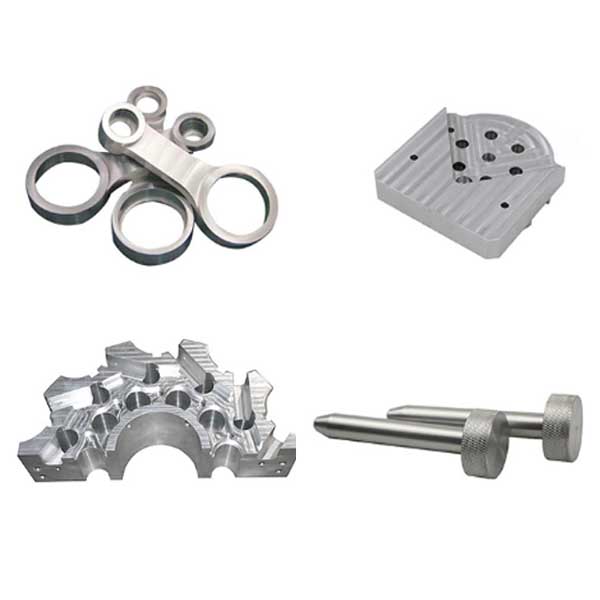1.Difficult to process titanium alloy
materials
90% of medical device implant parts are
made of Ti6Al-4V titanium alloy, which is derived from light weight, high
strength and high biocompatibility. Titanium alloy 6AL-4V has become the most
commonly used material for medical implant devices. Titanium alloy 6AL-4V is
commonly used in the manufacture of hip joints, bone screws, knee joints, bone
plates, dental implants, and spine connecting elements. Titanium alloys have
the characteristics of work hardening. During the machining process, the shear
angle is large, the chip produced is thin, and a relatively small contact area
is formed on the tool. In addition, the high cutting force during the machining
process, combined with the frictional force when the chips are flowing, will
comprehensively cause the local cutting heat of the tool to be too high. The
poor thermal conductivity of titanium alloy prevents the cutting heat from
being conducted quickly. Therefore, a large amount of cutting heat is
concentrated on the cutting edge and the tool surface. High cutting force,
cutting heat will cause the generation of crescent pits, and cause rapid tool
failure.
The relatively low modulus of elasticity
makes titanium alloys more elastic than steel. Therefore, excessive cutting
force should be avoided to ensure that the rebound of the workpiece is small.
Thin-walled parts have a tendency to deform under tool pressure, causing
tremor, friction and even tolerance problems. The key to solving the problem is
to ensure the rigidity of the entire system. It is very necessary to use tools
with sharp cutting edges and correct geometry.
In addition, titanium alloys have a
tendency to alloy with cutting tools at high temperatures, and their chips tend
to be welded to the tool surface.

2.Reliable and compact machine tool
fixture
Medical device processing equipment needs
to be able to process small and complex parts made of difficult-to-machine
materials (such as titanium alloys or stainless steel) with high accuracy
requirements, such as processing bones and joint replacement parts. Due to the
poor cutting performance of the material being processed, the blank is usually
a bar stock-this means that a large amount of metal needs to be removed.
Therefore, a part of the parts are cast into a shape close to the finished
product, but this also increases the trouble-the need to manufacture complex
and expensive fixtures. Another factor that increases processing complexity is
the narrow tolerance range.
The requirements for the materials,
processing accuracy, and surface finish of medical device parts and components
are high, which requires high reliability of the processing system. As a
result, extremely high demands are placed on machine tools, fixtures, tools,
CAM software, etc. Workpieces are usually processed on advanced medical
equipment processing equipment such as Swiss automatic lathes, multi-spindle
machine tools and rotary tables. The characteristics of these machine tools are
mostly very small size and very compact structure.
3. Stable and efficient tool cutter
Medical devices first require very good
surface finish, very high accuracy, and no deviations. This requires that the
tool cutter must meet very high processing requirements from the design of the
blade structure to the design of the blade coating. In addition, it also
includes the repeated positioning accuracy of the blade, which can not ignore
the high quality requirements while ensuring the improvement of efficiency.